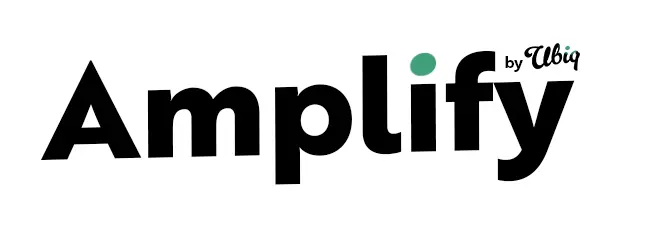Last Updated: 26th May 2025
Remember the days when private school marketing meant placing an ad in the local newspaper and hoping for the best? Well, those days are about as outdated as flip phones and dial-up internet.
Today's parents are savvy digital natives who research everything online—from the best pediatrician to the perfect preschool—and they expect schools to meet them where they are.
Enter inbound marketing for private schools: the art of attracting families to your school by being genuinely helpful instead of pushy.

Think of it as the difference between a used car salesman chasing you around the lot and a knowledgeable friend who answers your questions without trying to close a deal every five minutes.
WHAT THIS ARTICLE COVERS:
What Exactly Is
Inbound Marketing?
Inbound marketing for independent schools flips the traditional marketing script on its head. Instead of interrupting people with ads they don't want to see, you create content that answers the questions they're already asking. For private schools, this means developing resources that help families navigate the often overwhelming school search process while naturally showcasing what makes your institution special.
Picture this: A parent googles "how to choose the right elementary school," finds your comprehensive blog post on the topic, downloads your helpful school selection checklist, and signs up for your newsletter.
Six months later, when they're ready to tour schools, guess who they call first? (Hint: It's probably not the school that sent them three brochures they never asked for.)
The beauty of inbound marketing lies in its patient, relationship-building approach.
Instead of cold-calling busy parents during dinner or bombarding them with generic flyers, you're building trust and credibility over time. When decision time comes, your school isn't just another option—you're the trusted educational partner they've been learning from all along.
Why Inbound Marketing Is Perfect
for Private Schools
It Builds Genuine Trust
Let's face it—choosing a school is one of the biggest decisions parents will make. They're not looking for flashy sales pitches; they want honest, helpful information from educators they can trust. By consistently providing valuable content, you position your school as a knowledgeable partner, not just another institution with its hand out.
It Attracts Your Ideal Families
Remember that family who seemed perfect during the tour but turned out to be completely misaligned with your school's values? Inbound marketing helps you avoid those mismatches by attracting families who are genuinely interested in what you offer. When your content reflects your school's personality and philosophy, you naturally draw in like-minded families.
It Supports Every Step of the Journey
The modern school search process isn't linear. Parents might research for months, attend multiple open houses, and have seventeen different conversations with their spouse before making a decision. Inbound marketing meets families wherever they are in this journey, providing the right information at the right time.
Your Inbound Marketing
Tactics Toolkit
Content That Actually Helps
Start creating content that addresses the real questions keeping parents up at 2 AM. Think blog posts like "Navigating the Private School Application Process Without Losing Your Mind" or "What to Look for During School Tours (Beyond the Pretty Campus)." Video tours, parent testimonials, and comprehensive FAQ sections also work wonders.
Pro tip: If you're struggling to come up with content ideas, spend a day shadowing your admissions team. The questions they answer repeatedly are goldmines for your content calendar.
SEO That Gets You Found
Search Engine Optimization might sound intimidating, but it's really just about making sure your helpful content shows up when parents search for it.
Research the terms your ideal families are typing into Google—things like "why are private schools in Switzerland so expensive?" or "Montessori vs. traditional education"—and create content around those topics.
Social Media That Engages
Your social media shouldn't just be a highlight reel of graduation ceremonies and sports victories (though those are great too). Share behind-the-scenes glimpses of daily life, teacher spotlights, and educational tips that showcase your school's personality. Think less "corporate brochure" and more "friendly neighbor who happens to run an amazing school."
Email Nurturing That Doesn't Feel Salesy
Set up automated email sequences that deliver genuine value. When someone downloads your "Preparing for Kindergarten" guide, follow up with a series of helpful emails about child development, transition tips, and age-appropriate activities. By the time you mention your upcoming open house, they'll actually want to hear from you.
Landing Pages That Convert
Create dedicated pages for specific events or resources. Instead of sending everyone to your generic homepage, direct them to targeted pages that speak directly to their interests. A page for "Prospective Families" should feel different from one for "Current Parents"—and both should make it crystal clear what someone should do next.
Playing Well with
Traditional Marketing
Here's a secret: Inbound marketing doesn't mean abandoning everything else you're doing. The magic happens when you combine inbound strategies with traditional outbound efforts. That Facebook ad might drive someone to download your curriculum guide, which triggers a helpful email sequence, which eventually leads to an open house visit.
Think of it as a symphony where every instrument plays its part. Your direct mail piece introduces your school, your website provides the details, your email nurtures the relationship, and your personal touch closes the deal.
Measuring
What Matters
Unlike that newspaper ad from the old days, inbound marketing is incredibly measurable. You can track which blog posts attract the most visitors, which emails get opened, and which channels drive actual applications. This data isn't just interesting—it's actionable intelligence that helps you double down on what works and ditch what doesn't.
Set up Google Analytics, monitor your email open rates, and pay attention to which content resonates most with your audience. When you see that your "Day in the Life of a Third Grader" video gets more engagement than anything else, you know to create more content like it.
The Real Talk:
Challenges You'll Face
Content Creation Takes Time
Let's be honest—creating quality content isn't something you can knock out during lunch break. It requires planning, writing, editing, and ongoing maintenance. But here's the thing: the time you invest upfront pays dividends for years to come. That comprehensive guide you write today might attract families for the next five years.
Consistency Is Key
Your blog can't gather digital dust for six months and then suddenly spring back to life during application season. Inbound marketing requires consistent effort, but it doesn't have to be overwhelming. Start small—maybe one blog post per month—and build from there.
Everyone Needs to Be on Board
Marketing and admissions can't work in silos anymore. When a family moves from reading your blog to scheduling a tour, the experience should feel seamless. Make sure your admissions team knows what content families have engaged with so they can continue the conversation naturally.
Getting Started Without Getting
Overwhelmed
Know Your Families
Before you write a single blog post, get crystal clear on who you're trying to reach. What keeps your ideal parents up at night? What questions do they ask during tours? What concerns do they voice in parent Facebook groups? This insight becomes the foundation of all your content.
Audit What You Already Have
You probably have more content than you realize—newsletters, FAQ documents, admissions presentations. Look at what's already working and figure out how to repurpose it for your inbound strategy.
Start with a Content Calendar
Plan your content around the school year and application timeline. September might focus on "Is Your Child Ready for School?" content, while January could tackle "Making the Most of School Tours." Having a plan prevents that deer-in-headlights feeling when it's time to create something new.
Invest in the Right Tools
You don't need every fancy marketing tool on the market, but a few key platforms will make your life easier. Email automation software, basic analytics tools, and a user-friendly website platform are good starting points.
In Conclusion:
The Bottom Line
Inbound marketing isn't just another buzzword—it's a fundamental shift toward building authentic relationships with families. In a world where parents are bombarded with marketing messages, the schools that succeed are the ones that choose to be helpful instead of pushy, informative instead of interruptive.
Yes, it takes more time and effort than slapping together a generic brochure. But the payoff—attracting families who are genuinely excited to be part of your community—makes every blog post, every email, and every social media update worth it.
Your school has amazing stories to tell and valuable wisdom to share. Inbound marketing is simply the vehicle that helps you share those stories with the families who need to hear them most. And in a competitive landscape where every school claims to be "exceptional," being genuinely helpful is the best way to stand out from the crowd.
Looking for
Marketing Support
Looking to boost your admissions inquiries?
Speak to our friendly team for expert, no-obligation advice.
 |
Author: Gretlin Aumre, Director of Services Gretlin has spent the last 15 years in marketing, both agency and client-side, and has a rich understanding of content marketing, SEO, and digital advertising. With significant experience in the education sector, Gretlin joined Amplify in May 2024 as Director of Services. She now supports schools worldwide in amplifying their enrollment strategy. |













